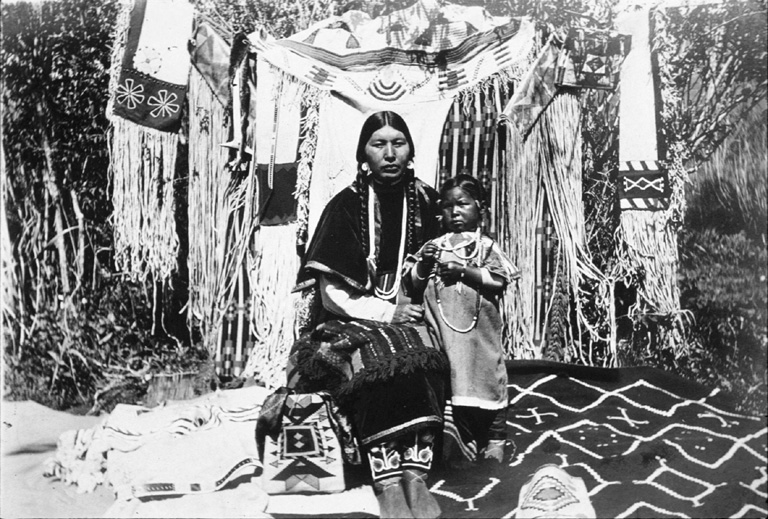The Chinooks were accustomed to European goods and white traders, so their first encounters with the expedition were peaceful. On October 26, 1805, two Chinook chiefs and several men came to the expedition’s camp to offer gifts of deer meat and root bread cakes. The captains responded by presenting the chiefs with medals and the men with trinkets. Other Chinook villages along the banks of the river offered similar receptions to the Americans as they approached the Pacific Ocean and the mouth of the Columbia River.

Cayuse/Chinook woman known as Ida Howlish or Te-Mow-E-Ne poses with child and many beaded objects

Chinook burial canoe, at mouth of Columbia River, in engraving made 1839